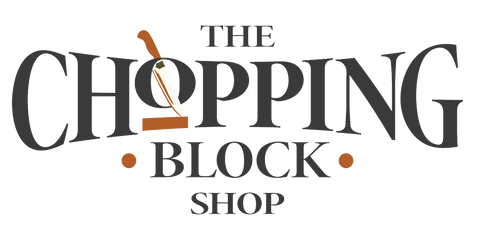End Grain Boards
End grain chopping boards are the gold standard for serious home cooks and professional kitchens alike. Built with the wood fibres standing upright, they absorb the impact of every cut and “self-heal” more effectively than edge- or face-grain, helping your knives stay sharper for longer. Our range includes oak, walnut, iroko, and multi-hardwood end grain boards, each selected for durability, stability, and food-safe performance. Oak offers classic strength and a warm, honeyed tone; walnut delivers rich, dark character and a beautifully smooth cutting feel; iroko offers superb dimensional stability, so it’s less likely to warp or cup with regular washing and drying. Multi-hardwood designs combine contrasting timbers to create striking chequerboard patterns with superb dimensional stability.
Every board is finished with food-safe oil and wax to protect against drying and water ingress, making them a long-term investment with proper care. With the right conditioning routine and sensible aftercare (wash, dry thoroughly, re-oil as needed), an end grain board can serve for decades or even a lifetime, we like to think buying an end grain board from us is the last chopping board you’ll ever need to buy. Our collection of handmade end grain boards brings together premium materials, beautiful craftsmanship, and everyday practicality.
All sizes are approximate, there may some slight variances.
Our Full Guide on End Grain Chopping Boards
Frequently Asked Questions
With the right care, a high-quality end grain chopping board can last for decades, sometimes even a lifetime. We see this as a long-term investment as for many cooks it should be the last chopping board they’ll ever need to buy. Because the wood fibres are oriented vertically, the board naturally absorbs the impact of your knife, meaning less visible scarring and a surface that “heals” better than edge grain or plastic boards. Regular oiling and avoiding excess water exposure will keep the wood strong and resilient for years to come.
End grain boards are often called “knife-friendly” because of their upright wood fibre structure. When you cut, the blade slips between the vertical fibres rather than hacking across them, meaning the board absorbs the impact instead of your knife edge. While not every cut will perfectly follow the grain, the fibres still move with the blade and then naturally close back up, reducing wear. The result? Your knives stay sharper for longer, and every chop feels smoother and more controlled.
Yes, in fact, end grain boards are naturally hygienic when properly maintained. The vertical wood fibres can absorb small amounts of moisture on the surface, but they also allow it to evaporate quickly, reducing bacterial growth. Many studies have shown that wood chopping boards can be just as safe, if not safer, than plastic when cleaned and dried correctly. The key is simple: wash, dry thoroughly, and condition with food-safe oil.
Absolutely. Oiling is what keeps an end grain board looking beautiful and functioning properly. A food-safe mineral oil or board conditioner prevents the wood from drying out, shrinking, or cracking. How often you need to oil depends on how much you use the board, heavy daily use might call for monthly oiling, while occasional use might only need it every few months. A quick test: if the surface looks dry or water stops beading, it’s time to re-oil.
Choosing the right oil is an essential step in protecting your end grain boards. Food-safe mineral oil penetrates to hydrate the wood and help prevent drying, cracking, and warping. Beeswax adds a protective, water-resistant top layer with a gentle sheen. An oil-and-wax blend gives you both deep conditioning and surface protection.
An end grain chopping board is easy to spot once you know what to look for. Instead of showing the long length of the wood, an end grain board reveals the cut ends of the fibres, just like looking at the cross-section of a tree stump, where you see rings, dots and ovals. The board is built from many small blocks with the fibres pointing upwards, and to keep it strong and stable we rotate and stagger the blocks. This creates the distinctive chequerboard or brick-bond look, where each block shows its own grain pattern. If you run your hand across the surface, you’ll notice the fibres stand vertically, so a knife slips between them rather than cutting straight across. By contrast, edge or face grain boards display long, parallel lines instead of this block-like pattern.
